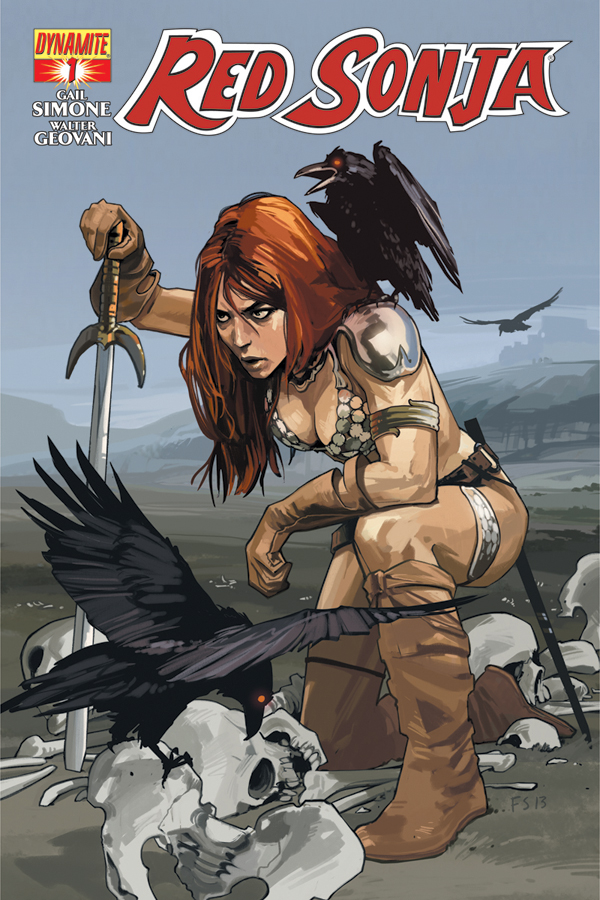
So Red Sonja got a relaunch this week. Or I guess now last week. And Red Sonja would be an example of a character that I am more interested in the idea of, and the history of, then the actual present of. For the most part books like Red Sonja(and my super favorite example of this Vampirella) are being put out in the shadow of much much better times from before I was even born. I don’t know who exactly the audience is for them at this point. I mean I suppose mainstream comics wise, your female barbarian fix isn’t getting serviced in many other places, perhaps? I also think these books are largely sold on their cover art–so I would imagine that’s where the bulk of the budget is going, so maybe it’s largely collectors who are picking them up? I don’t really know.
But at any rate, when Gail Simone was announced to be going over to Red Sonja–I was kind of looking for an excuse to look at a Red Sonja book again, and sort of delude myself into thinking it could be anything like the awesome Red Sonja book in my head, or anything like the highpoints from Barry Windsor Smith and Frank Thorne(Ghita too). Plus I am into a lot of metal where I could really use an absolutely brutal barbarian book in my life(Berserk?). Intellectually I knew that wasn’t really what Gail Simone does–but at any rate I thought–I dunno, maybe some weird thing could happen where the writing, art, and coloring on the book could get to a level where I could at least sort of have a book of this ilk to read each month.
But what ended up happening, and maybe it’s predictable–but it’s part of what irks me about publishers on this level–the book just came off like everyone involved was just about being a pro, doing a pro job, and cashing the check or whatever. I mean you compare it to any of Becky Cloonan’s recent sword and sorcery comics(which by the by, it is extremely weird to me that Brian Wood tells Becky Cloonan anything about how to do a Conan story. Nothing against Wood–but Becky Cloonan is infinitely more qualified to write this genre than maybe anyone)–and it’s just lacking. I mean even a book like Northlanders had a little more oomph.
And I don’t intend for this to be a kind of “buy this, or don’t buy that” kind of review. I could give a fuck about comics as a purchase. I don’t even really want to talk about this book in terms of good or bad. Because that’s subjective. Bad can be good. Good can be bad. I don’t really care. My expectations are weird. If people made comics like how I want them, then I’m pretty sure they’d never sell anything.
But here’s what I think. I think if you’re a company that isn’t DC or Marvel, and you want to stand your ground–you don’t do it by putting out uninspired comics that are playing it safe and by the numbers. I am almost a thousand percent certain that the people currently reading books like Red Sonja and Vampirella are not doing so because the content on the interior matters very much to them. That was the great thing about like Vampirella in the 70s. The stories were whatever. Sometimes the writing was just terrible. BUT the artists on those books completely went for it. Fernando Fernandez, Jose Bea, Jose Gonzalez etc. just drew the ever loving crap out of those shitty stories. Even the cover artists from back then are shaming the current crop.
But so Simone’s script. It is first issue of a superhero comic 101. It’s interesting the initial set up–wild woman chained in the basement of a castle could have gone in a million strange and horrific directions–but it’s just a way for us to tie Red Sonja to this nondescript King we’re mildly supposed to care about–and it also sets up an antagonist that is revealed on the last page–in one of those “oh holy shit, out of the past” kind of final splash pages that I would fall out of my chair if a superhero comic didn’t start that way, just once. I mean structurally the whole thing is sound. There’s characterizing moments that endeer us to different characters, or are meant to. But I mean…I think the effect here is that you’ve made this really fantastic and strange world that Red Sonja lives in, this brutal violent, almost alien world(there are people riding shark horses in the background of the last page) and made it domestic and mundane. There’s nothing about the characters that surround Sonja which make them interesting or new. They are largely archetypes that fit safely into a lot of the boxes that Simone has already established in books like Birds of Prey. Compare that to a book like Prophet which came out also last week, every issue of that book introduces some strange new and weird concept, idea, or character.
But I mean, the writing on these kind of books is the kind of thing that just usually has to tick certain boxes so the art can do it’s thing. Which there’s nothing wrong with Simone’s script on that front.
Walter Geovani is the artist on the book. And it is difficult to really talk about his work because of the coloring techniques being applied to them. Here are some just inked pages from the book from his deviantart page
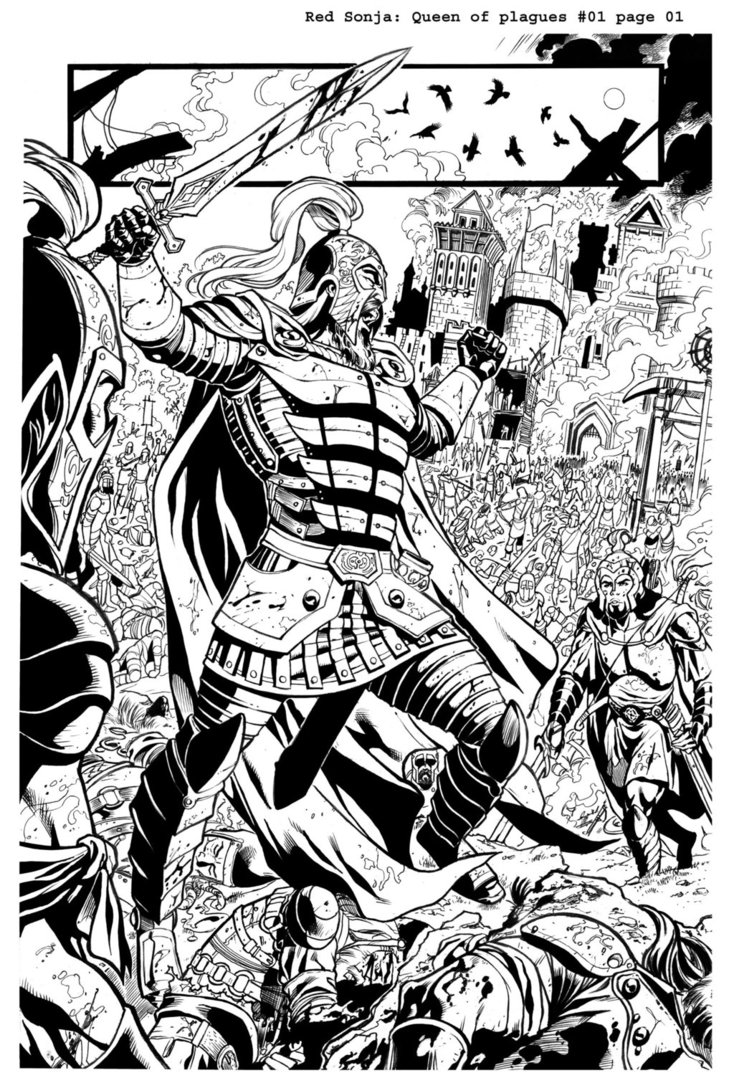
There’s some nice stuff going on with the high contrast between the blacks and the white space. The character design is utilitarian. He uses this halo effect off and on to pop different parts of his page out of the rest of the page. I think for the most part when you are using such a heavy inked style–you are essentially about segmenting white space off into particular shapes and relations. So what is going to make this style interesting or not, is going to come down to the composition of those shapes, and how you are transitioning between place to place. A clear style like this should allow you to either create a lot of great empty space for color or light to really express itself–or it should allow you to put a lot of details on the page.
Contrast that approach to the one shown here by Esteban Maroto: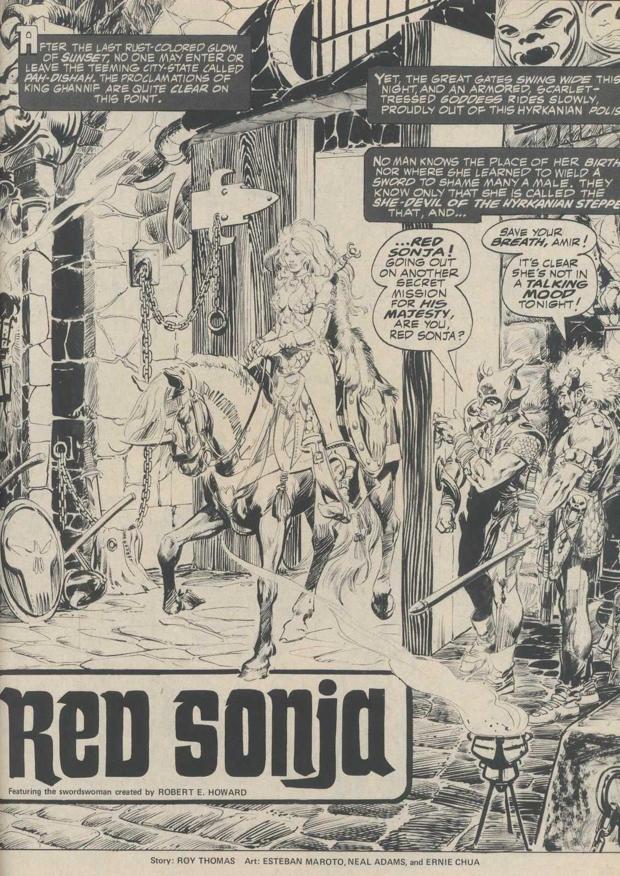
Here the ink is more expressive and it is as much about the texture it creates and the patterns it conveys on the page, as it is about denote shadow. Also note how the varied line weight allows for an added dynamism to the characters on the right. And also check the crazy designs going on on this page. Every element has the weight of an original world behind it. Even if it maybe wasn’t in the script–there’s a sense that Maroto has a world in his head. Check the skull scabbard on the dude on the right. Check the hilt on Sonja’s sword and compare it with the hilt on the Geovani’s sword. There’s a fanatical passion behind these Maroto pages. Maybe misguided because he won’t own the intellectual property rights or whatever–but still, dude can’t help himself. Check the Breccia influenced texture on the stone on the bottom right of the page. Comics…fuck yeah.
I’ve actually been thinking a lot about inking in comics this past week, for a few reasons. One was this thing I’ve been reading Frank Santoro saying in various places(a real writer would put a link here) about how a lot of people in comics are just inking because they are attached to a process in comics history that doesn’t really have much to do with the aesthetic of the art. It is more about just making your pencils darker. Which now we have the technology where you don’t really have to ink your pencils to make an interesting comic. So I’ve been thinking a lot about why we ink, and what the future for inking is. I feel like these Breccia influenced artists, Hugo Pratt, Paul Pope, Caniff motherfuckers–like the way they are using ink is as another level of expression, and that’s the kind of thing that will never die out. The beauty of ink as texture is still a thing. However, this kind of thing–where it’s just inking to darken pencils–what is the future for this kind of thing?
Particularly when this is what is going to happen to your work:
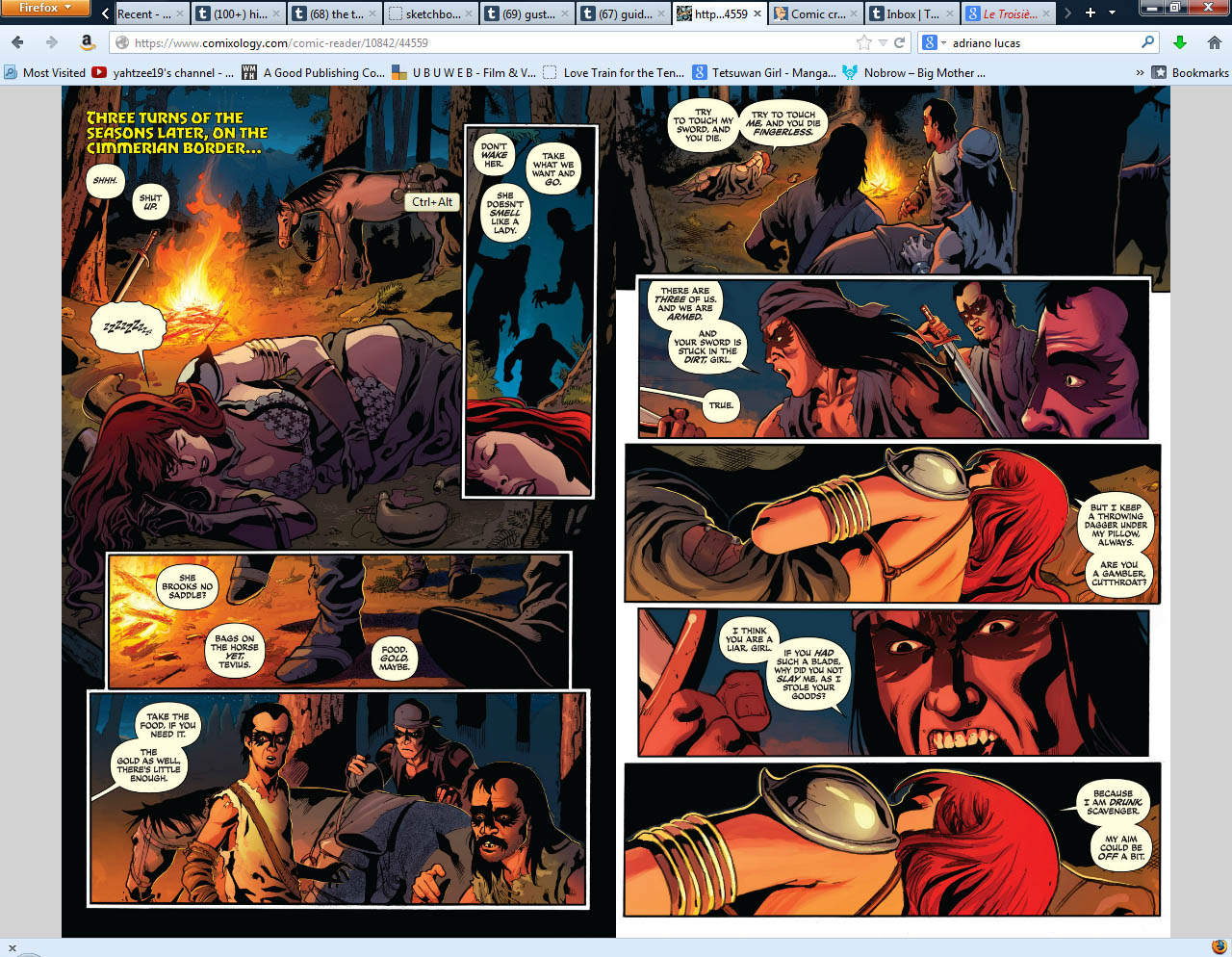
These are the colors from Adriano Lucas, and this is the kind of approach you see in a lot of Dynamites books–and just sort of–this is what is in vogue for colorists to do right now. Which it’s done okay here if you first accept that this is a particular style choice. Which is to say gradient style coloring that devalues the ink and line of the artist, to give primacy to the colorist. With this style, the added visual information from Lucas’s colors obliterate the strong contrasting values of Geovani’s line work. Which was probably his main strength as an artist on these pages–just the strength and bombast of his spotted blacks. His blacks here beecome almost obstructions to the work Lucas is wanting to do. Look at the shoes and blankets on the left page–those being black like that is something that rather than trying to highlight or allow to express itself, Lucas is instead seeing them as just another color on the page, and he builds his gradients into and out of that black. Which is really absurd when you think about it. Colorist is going to do these animation style gradients, and the starting point is that you have to deal with the color black all over the page, before you even start working. The relationship is in conflict with itself. The way Lucas is wanting to do this page is fundamentally at odds with Geovani’s inks, which have imposed upon him a color choice that may or may not even work half the time.
I mean if Geovani’s blacks weren’t there, there’s no indication that Lucas would change his approach–but I think his colors would absolutely pop more, and the choices open to him color wise open a little bit more.
When you have heavy blacks on the page, I think flats are infinitely more powerful to use. When an artist puts down heavy black inks–the contrast, why it’s dramatic is because it’s that clash of light and dark. When you chuck gradient styles into that equation, you are watering down that relationship.
Look at this Dave Stewart page from Hellboy in Hell by Mignola:
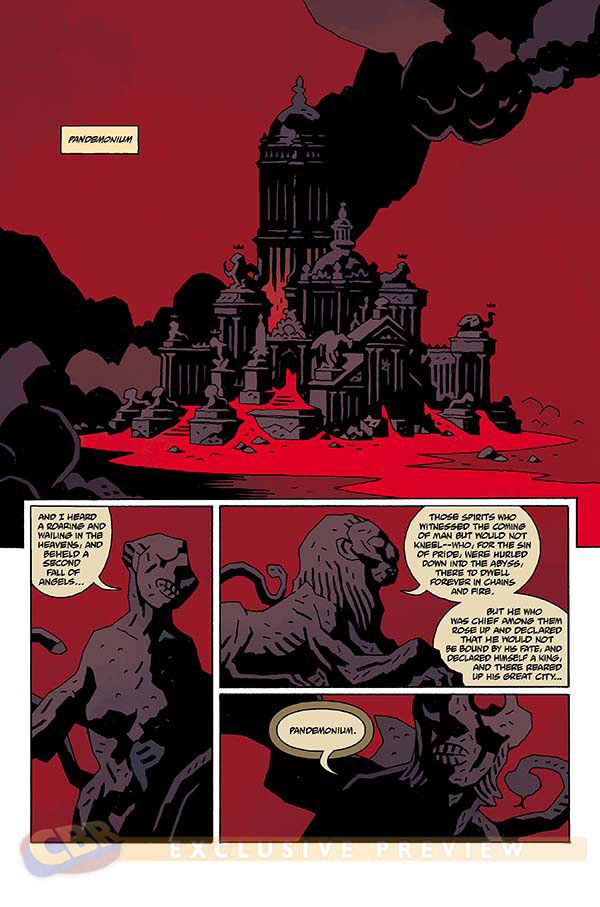
By just using a few colors and no real gradients, Stewart allows Mignola’s art to hit and hit hard.
Of course part of the issue here too is that Geovani’s art is in this no-man’s land between heavy impressionistic inks like Mignola, Munoz, Frank Miller–and lighter cleaner line styles like Brandon Graham and Herge. He’s not even in the territory of lighter impressionistic ink scratches like a Darrow or Milogiannis. So it’s this situation where he’s not getting the benefits of gradients, but it is also questionable what you’d really be getting out of flats either.
There are a few pretty cool pages in terms of composition. This page on the left is probably my favorite page in the comic.
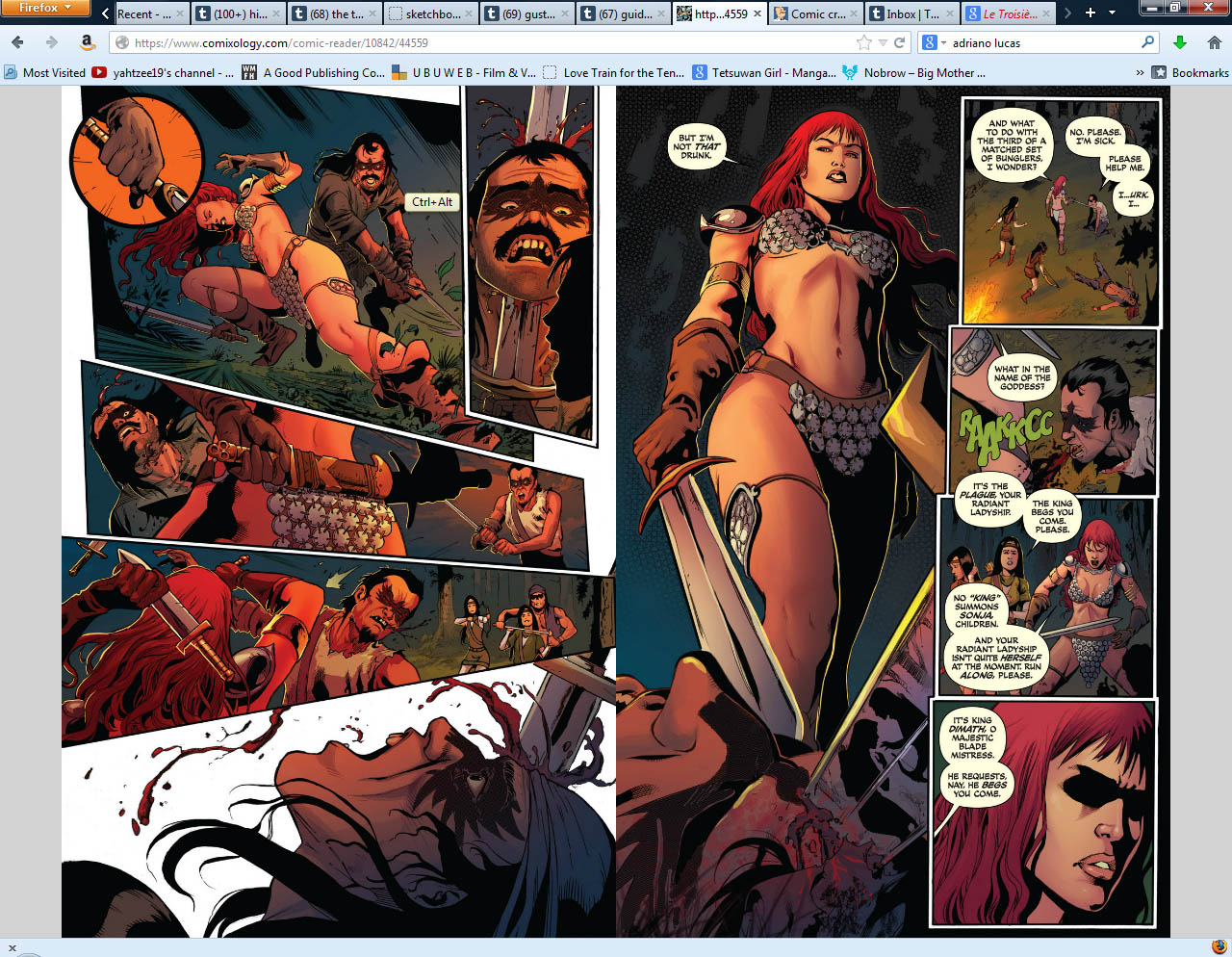
The way the first panel saws down with the motion of the sword swipe, and then then the second panel mimics the motion of the sword going up through dude’s face. And then that cool pause on the fifth panel where Sonja is about to throw her knife–and we get the climax of that at the bottom of the page. I also dig that flat orange background of that circle insert on the top left of the page. Also you get that huge white space behind the panels which I think really does set off the color choices. I wouldn’t mind seeing more of that kind of construction because I think the contrast of that white page sort of deadens the more offensive qualities of the gradients, while popping the color choices a little bit more. Sonja’s hair color in the fifth panel is pretty great, and how her arm is absorbing the red color from her hair. It’s amazing to contrast the dynamism of the page on the left, with how dead and dull the page on the right is. It’s crazy to me too that we’re rocking that ugly green grass color when since it’s night and there’s an orange fire, there’s like literally no reason to have to use that color. I kind of dig how offensive it is too though.
Anyways. It’s not a terrible book. It doesn’t look completely terrible. But it also pretty much everything that is making mediocre comics a staple of the american comic industry right now. This is visually and storytelling wise exactly the kind of thing you would expect to read from DC, Dynamite, Top Cow so on, so forth, whatever.
Here’s art from Alex Alice’s Siegfried book, Rebecca Dart, and Becky Cloonan…because whatever:
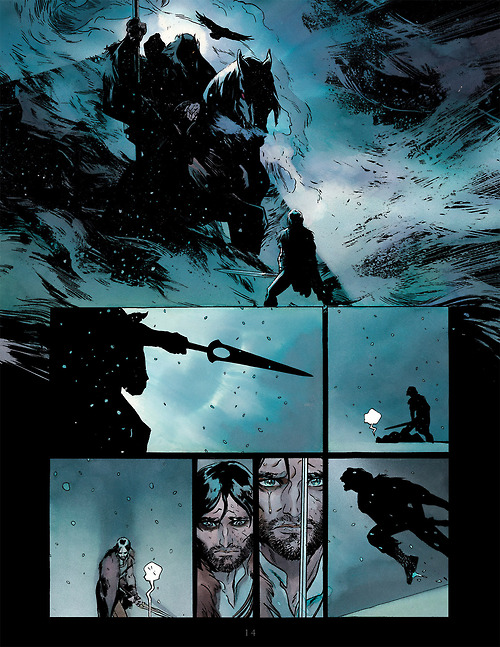



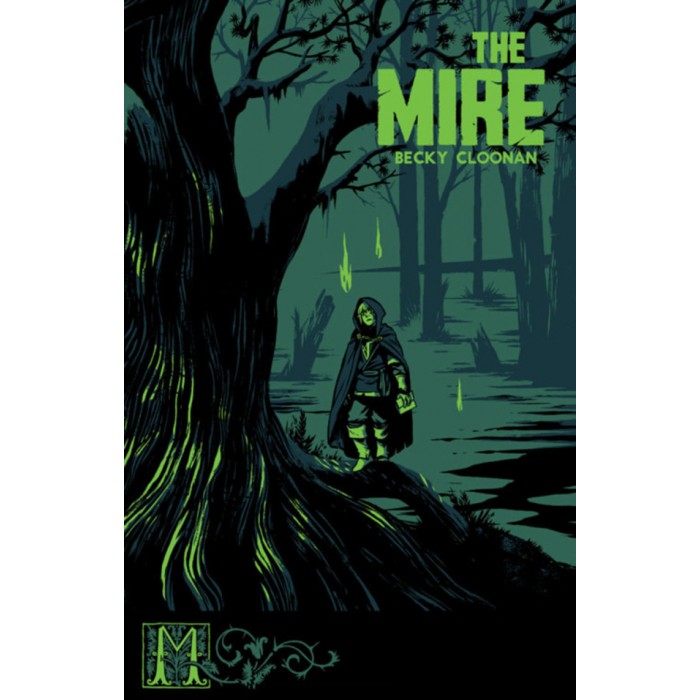
Also it’s hilarious to me that the colorist isn’t on the cover of this Red Sonja Book.









